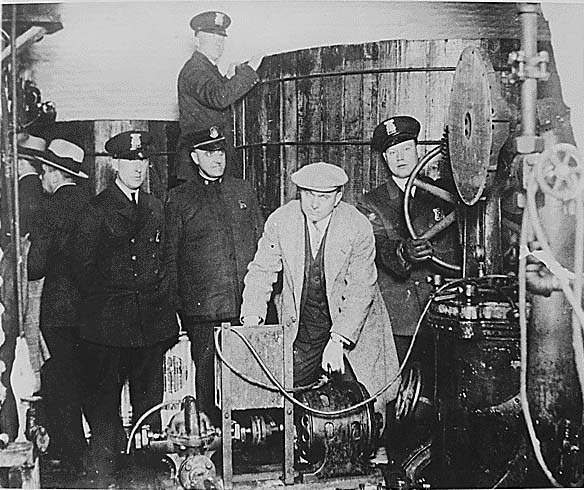It took the greater part of the century to prohibit the consumption of alcohol by federal law. The Eighteenth Amendment was ratified in 1919, which banned the production and distribution of alcohol (Evans 118). During Prohibition’s course from 1920 to 1933, millions of Americans still consumed alcohol illegally. Bootlegging, the illegal production and sale of liquor, and speakeasies, which were illegal drinking establishments, allowed Americans to access alcohol with ease (History). The circumstances of Prohibition brought on the rise of organized crime and violence between criminal gangs (History).

Detroit police inspecting equipment found in a clandestine underground brewery (National Archives)
Within the first years of Prohibition, many supporters began to revoke their approval due to the unintended increase in the production and sale of alcohol, the birth of the speakeasy, and the loss of individual freedom (Interdict). In 1832, the Democratic Party supported the repeal of the Eighteenth Amendment, and their win in the election ushered in the repeal of the amendment the next year (Interdict). Prohibition had ended by 1933, however, a few states held onto the laws until 1966 (Interdict). While it may seem that these states were merely stubborn, the way that these states refused to give up the Prohibition laws foreshadows the dissension in American society regarding the morality of consuming alcohol.